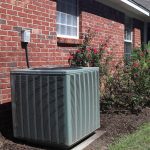1. Frequent Electrical Surges
Causes of Electrical Surges: Electrical surges can be a common problem in many homes, often caused by external factors like lightning strikes, damaged power lines, or internal issues such as faulty appliances or poor electrical wiring. Surges are sudden spikes in electrical voltage that can last for a fraction of a second, but they have the potential to damage electronics, degrade electrical components, and, in severe cases, cause fires.
Identifying the Source: To diagnose the source of frequent surges, start by observing if they occur during specific events, like storms or when using particular appliances. Disconnecting and observing the behavior of suspected appliances can help identify if they are the cause.
Solutions:
- Unplug Faulty Devices: If a particular appliance is causing surges, stop using it and consult a professional for repair or replacement.
- Install Surge Protectors: Surge protectors can help safeguard your home by diverting excess voltage to the ground, thus protecting your appliances.
- Upgrade Wiring: In older homes, outdated wiring can often be a culprit. Consider having an electrician inspect and possibly upgrade your wiring to meet current standards.
- Consult an Electrician: If surges persist without a clear cause, it’s essential to consult a licensed electrician. They can conduct a thorough assessment of your home’s electrical system and recommend appropriate solutions.
By understanding and addressing the causes of electrical surges, homeowners can protect their appliances, reduce risks, and ensure a safer electrical system in their homes.
2. Overloaded Circuits
Understanding Circuit Overload: One of the most common electrical problems in homes is overloaded circuits. This occurs when too many appliances or electronic devices draw power from the same circuit, exceeding its capacity. Overloaded circuits can lead to tripped breakers, blown fuses, and in severe cases, electrical fires.
Identifying the Problem: Signs of an overloaded circuit include frequently tripped circuit breakers, flickering lights, and outlets that are warm to the touch. Appliances may also underperform or shut off intermittently.
Solutions:
- Redistribute Power Usage: Avoid plugging multiple high-energy-consuming appliances into the same circuit. Spread out your power consumption across different circuits.
- Use Surge Protectors: Surge protectors can help manage the load and protect your devices.
- Upgrade Your Electrical Panel: If your home has an outdated electrical panel, consider upgrading it to handle a higher capacity, especially in modern homes with numerous electronic devices.
- Professional Assessment: If you’re unsure about the capacity of your circuits or how to redistribute your appliances, consult a licensed electrician. They can provide a detailed assessment and recommend solutions like adding additional circuits to accommodate your electrical needs.
By effectively managing and understanding the load on each circuit, homeowners can prevent the risks associated with overloaded circuits and ensure a safer and more efficient electrical system.
3. Electrical Shocks
Causes and Risks: Electrical shocks, often minor but sometimes severe, are a warning sign of potential electrical hazards. They typically occur when touching appliances and can be due to issues like faulty wiring, ground faults, or damaged appliances.
Identifying the Issue: Pay attention to when and where the shocks occur. If they happen consistently with a specific appliance or outlet, this could be the source of the problem.
Solutions:
- Test Appliances: Use a multimeter to test appliances suspected of causing shocks. If you’re not familiar with how to use one, it’s best to call a professional.
- Inspect Wiring: Check for any visible signs of damaged wiring or outlets. If you find any, it’s crucial to have these repaired by a licensed electrician.
- Professional Help: For persistent issues or if you are unsure, always seek the help of a qualified electrician. They can conduct a thorough inspection and resolve the underlying issues safely.
Taking immediate action upon experiencing electrical shocks is crucial for ensuring your home’s safety and preventing more severe electrical problems.
4. High Electricity Bills
Understanding High Bills: Unexpectedly high electricity bills can be a symptom of various electrical problems. These can include leaks in the electrical system, inefficient or outdated appliances, and poor insulation.
Diagnosing the Issue: Investigate any sudden increases in your bill. Compare it with previous months and consider any changes in appliance usage or home occupancy.
Solutions:
- Energy Audit: Conducting a home energy audit can help identify areas where you’re losing energy. This could involve checking for drafts, inspecting insulation, and reviewing appliance efficiency.
- Upgrade Appliances: Older appliances tend to be less energy-efficient. Consider upgrading to Energy Star-rated devices to reduce consumption.
- Repair or Replace Leaking Circuits: Faulty wiring or circuits can lead to energy loss. Have an electrician inspect and repair any issues.
- Use Smart Devices: Smart thermostats and energy monitors can help you manage your energy usage more effectively.
Addressing these issues can lead to significant savings on your electricity bills and contribute to a more energy-efficient home.
5. Light Switches Not Working Properly
Identifying Issues with Light Switches: Light switches that don’t function correctly can be a sign of underlying electrical problems. This might include issues like poor wiring connections, a faulty switch, or circuit problems.
Common Symptoms: Look out for switches that are unresponsive, emit strange noises, cause flickering lights, or feel warm to the touch.
Solutions:
- Check the Switch: Sometimes, the issue can be as simple as a loose switch or a switch that needs replacing. Ensure the power is off before attempting any inspection or replacement.
- Inspect Wiring: If replacing the switch doesn’t solve the problem, there may be a wiring issue. Look for loose connections or signs of wear. Proceed with caution and consider professional help if you’re not experienced with electrical work.
- Professional Inspection: For persistent or complex issues, it’s safest to consult a qualified electrician. They can thoroughly assess the situation and perform necessary repairs or upgrades.
Properly functioning light switches are essential for home safety and convenience, so addressing any issues promptly is crucial.
6. Circuit Breaker Tripping Frequently
Cause of Frequent Tripping: A circuit breaker that trips often is a common electrical issue, typically indicating an overloaded circuit, a short circuit, or a ground fault. These are protective measures to prevent overheating and potential fires.
Identifying the Issue: Notice when the breaker trips – does it occur when using a particular appliance or in a specific area of the home? This can help pinpoint the cause.
Solutions:
- Redistribute Appliance Usage: Avoid using high-wattage appliances simultaneously on the same circuit to reduce overload.
- Identify and Repair Short Circuits: If a short circuit is suspected, such as when a particular appliance causes tripping, unplug the device and consult a professional.
- Check for Ground Faults: In areas with high moisture, like bathrooms or kitchens, ground faults may occur. Ground fault circuit interrupters (GFCIs) can help mitigate this issue.
- Professional Electrical Inspection: Persistent tripping may require a thorough inspection by a licensed electrician to ensure your electrical system is safe and up to code.
Addressing frequent circuit breaker tripping is crucial for the safety of your home’s electrical system and should be resolved promptly.
7. Circuit Overload
Understanding Circuit Overload: Circuit overload, different from a simple trip, happens when too many devices are running simultaneously, causing excessive demand on the electrical system. This can lead to overheating and potentially fires.
Signs of Overload: Dimming lights, buzzing sounds from outlets, or a burning smell are key indicators of an overloaded circuit.
Solutions:
- Limit Appliance Usage: Be mindful of using multiple high-power devices at the same time on the same circuit.
- Upgrade Your Electrical System: Older homes may require an electrical system upgrade to handle modern electrical demands safely.
- Professional Evaluation: If you suspect your circuits are overloaded, have a licensed electrician conduct an evaluation and recommend solutions.
Conclusion
Dealing with electrical problems in your home can be challenging, but understanding these common issues and their solutions is crucial for maintaining a safe and functional living environment. Always prioritize safety and don’t hesitate to consult professionals for complex electrical issues. Taking proactive steps to address these problems not only ensures your home’s electrical system runs efficiently but also protects your family and property from potential hazards.


